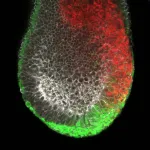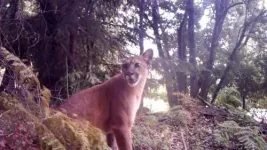(Press-News.org) Ozone levels in the earth's troposphere (the lowest level of our atmosphere) can now be forecasted with accuracy up to two weeks in advance, a remarkable improvement over current systems that can accurately predict ozone levels only three days ahead. The new artificial intelligence system developed in the University of Houston's Air Quality Forecasting and Modeling Lab could lead to improved ways to control high ozone problems and even contribute to solutions for climate change issues.
"This was very challenging. Nobody had done this previously. I believe we are the first to try to forecast surface ozone levels two weeks in advance," said Yunsoo Choi, professor of atmospheric chemistry and AI deep learning at UH's College of Natural Sciences and Mathematics. The findings are published online in the scientific journal, Scientific Reports-Nature.
Ozone, a colorless gas, is helpful in the right place and amount. As a part of the earth's stratosphere ("the ozone layer"), it protects by filtering out UV radiation from the sun. But when there are high concentrations of ozone near earth's surface, it is toxic to lungs and hearts.
"Ozone is a secondary pollutant, and it can affect humans in a bad way," explained doctoral student Alqamah Sayeed, a researcher in Choi's lab and the first author of the research paper. Exposure can lead to throat irritation, trouble breathing, asthma, even respiratory damage. Some people are especially susceptible, including the very young, the elderly and the chronically ill.
Ozone levels have become a frequent part of daily weather reports. But unlike weather forecasts, which can be reasonably accurate up to 14 days ahead, ozone levels have been predicted only two or three days in advance - until this breakthrough.
The vast improvement in forecasting is only one part of the story of this new research. The other is how the team made it happen. Conventional forecasting uses a numerical model, which means the research is based on equations for the movement of gasses and fluids in the atmosphere.
The limitations were obvious to Choi and his team. The numerical process is slow, making results expensive to obtain, and accuracy is limited. "Accuracy with the numerical model starts to drop after the first three days," Choi said.
The research team used a unique loss function in developing the machine learning algorithm. A loss function helps in optimization of the AI model by mapping decision to their associated costs. In this project, researchers used index of agreement, known as IOA, as the loss function for the AI model over conventional loss functions. IOA is a mathematical comparison of gaps between what is expected and how things actually turn out.
In other words, team members added historical ozone data to the trials as they gradually refined the program's reactions. The combination of the numerical model and the IOA as the loss function eventually enabled the AI algorithm to accurately predict outcomes of real-life ozone conditions by recognizing what happened before in similar situations. It is much like how human memory is built.
"Think about a young boy who sees a cup of hot tea on a table and tries to touch it out of curiosity. The moment the child touches the cup, he realizes it is hot and shouldn't be touched directly. Through that experience, the child has trained his mind," Sayeed said. "In a very basic sense, it is the same with AI. You provide input, the computer gives you output. Over many repetitions and corrections, the process is refined over time, and the AI program comes to 'know' how to react to conditions that have been presented before. On a basic level, artificial intelligence develops in the same way that the child learned not to be in such a hurry to grab the next cup of hot tea."
In the lab, the team used four to five years of ozone data in what Sayeed described as "an evolving process" of teaching the AI system to recognize ozone conditions and estimate the forecasts, getting better over time.
"Applying deep learning to air quality and weather forecasting is like searching for the holy grail, just like in the movies," said Choi, who is a big fan of action plots. "In the lab, we went through some difficult times for a few years. There is a process. Finally, we've grasped the holy grail. This system works. The AI model 'understands' how to forecast. Despite the years of work, it somehow still feels like a surprise to me, even today."
Before success in the laboratory can lead to real-world service, many commercial steps are ahead in before the world can benefit from the discovery.
"If you know the future - air quality in this case - you can do a lot of things for the community. This can be very critical for this planet. Who knows? Perhaps we can figure out how to resolve the climate change issue. The future may go beyond weather forecasting and ozone forecasting. This could help make the planet secure," said Choi.
Sounds like a happy ending for any good action story.
INFORMATION:
ITHACA, N.Y. - Tossing worn-out solar panels into landfills may soon become electronics waste history.
Designing a recycling strategy for a new, forthcoming generation of photovoltaic solar cells - made from metal halide perovskites, a family of crystalline materials with structures like the natural mineral calcium titanate - will add a stronger dose of environmental friendliness to a green industry, according to Cornell University-led research published June 24 in Nature Sustainability.
The paper shows substantial benefits to recycling perovskite solar panels, though ...
ITHACA, N.Y. - As mosquito-borne diseases pose risks for half the world's population, scientists have been releasing sterile or genetically modified male mosquitos in attempts to suppress populations or alter their traits to control human disease.
But these technologies have failed to spread very rapidly because they require successful mating of modified mosquitoes with mosquitoes in nature and not enough research exists to fully explain which male traits females seek when they choose a mate.
Now, a new Cornell study of Aedes aegypti mosquitoes investigates how a mating cue called "harmonic convergence" might affect immunity against parasites, bacteria and dengue virus in offspring, which has important ...
HOUSTON - (June 24, 2021) - Hold on there, graphene. Seriously, your grip could help make better catalysts.
Rice University engineers have assembled what they say may transform chemical catalysis by greatly increasing the number of transition-metal single atoms that can be placed into a carbon carrier.
The technique uses graphene quantum dots (GQD), 3-5-nanometer particles of the super-strong 2D carbon material, as anchoring supports. These facilitate high-density transition-metal single atoms with enough space between the atoms to avoid clumping.
An international team led by chemical and biomolecular engineer Haotian Wang of Rice's Brown School of ...
Optical superoscillation refers to a wave packet that can oscillate locally in a frequency exceeding its highest Fourier component. This intriguing phenomenon enables production of extremely localized waves that can break the optical diffraction barrier. Indeed, superoscillation has proven to be an effective technique for overcoming the diffraction barrier in optical superresolution imaging. The trouble is that strong side lobes accompany the main lobes of superoscillatory waves, which limits the field of view and hinders application.
There also are tradeoffs between the main lobes and the side lobes of superoscillatory wave packets: reducing the superoscillatory feature size of the ...
Early in the COVID-19 pandemic, scientists identified how SARS-CoV-2, the virus that causes COVID-19, gets inside cells to cause infection. All current COVID-19 vaccines and antibody-based therapeutics were designed to disrupt this route into cells, which requires a receptor called ACE2.
Now, researchers at Washington University School of Medicine in St. Louis have found that a single mutation gives SARS-CoV-2 the ability to enter cells through another route - one that does not require ACE2. The ability to use an alternative entry pathway opens up the possibility of evading COVID-19 antibodies or vaccines, but the researchers did not find evidence of such evasion. However, the discovery does show that the ...
DUARTE, Calif. -- City of Hope, a world-renowned cancer research and treatment center, has identified how cancer cells in patients with early-stage breast cancer change and become resistant to hormone or combination therapies, according to a END ...
Scientists from Helmholtz Zentrum München revise the current textbook knowledge about gastrulation, the formation of the basic body plan during embryonic development. Their study in mice has implications for cell replacement strategies and cancer research.
Gastrulation is the formation of the three principal germ layers - endoderm, mesoderm and ectoderm. Understanding the formation of the basic body plan is not only important to reveal how the fertilized egg gives rise to an adult organism, but also how congenital diseases arise. In addition, gastrulation serves as the basis to understand processes during embryonic development called epithelial-to-mesenchymal transition which is known to lead to cancer metastasis in adulthood ...
When most Americans think of seaweed, they probably conjure images of a slimy plant they encounter at the beach. But seaweed can be a nutritious food too. A pair of UConn researchers recently discovered Connecticut-grown sugar kelp may help prevent weight gain and the onset of conditions associated with obesity.
In a paper published in the Journal of Nutritional Biochemistry by College of Agriculture, Health, and Natural Resources faculty Young-Ki Park, assistant research professor in the Department of Nutritional Sciences, and Ji-Young Lee, professor and head of the Department of Nutritional Sciences, the researchers reported significant findings supporting the nutritional benefits of Connecticut-grown sugar kelp. They found brown sugar kelp (Saccharina latissima) ...
FRANKFURT. Cancer and many other diseases are based on genetic defects. The body can often compensate for the defect of one gene; it is only the combination of several genetic errors that leads to the clinical picture. The 3Cs multiplex technique based on CRISPR-Cas technology developed at Goethe University Frankfurt now offers a way to simulate millions of such combinations of genetic defects and study their effects in cell culture. These "gene scissors" make it possible to introduce, remove and switch off genes in a targeted manner. For this purpose, small snippets of genetic material ("single ...
New research from the University of California, Santa Cruz shows how regional shelter-in-place orders during the coronavirus pandemic emboldened local pumas to use habitats they would normally avoid out of fear of humans. This study, published in the journal END ...





